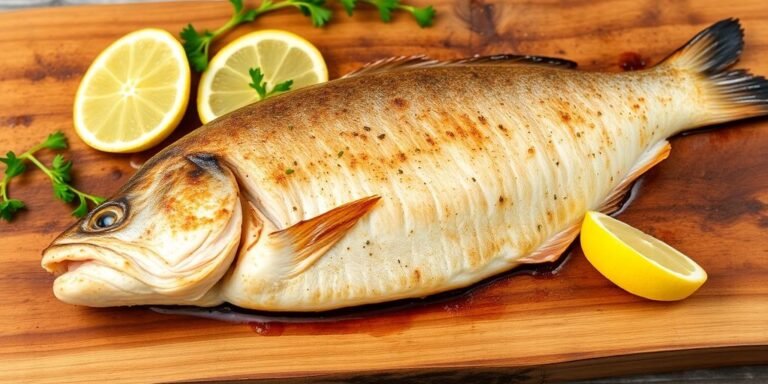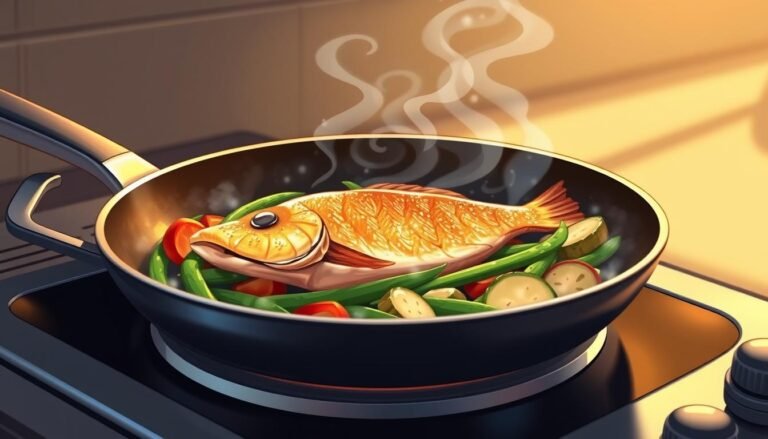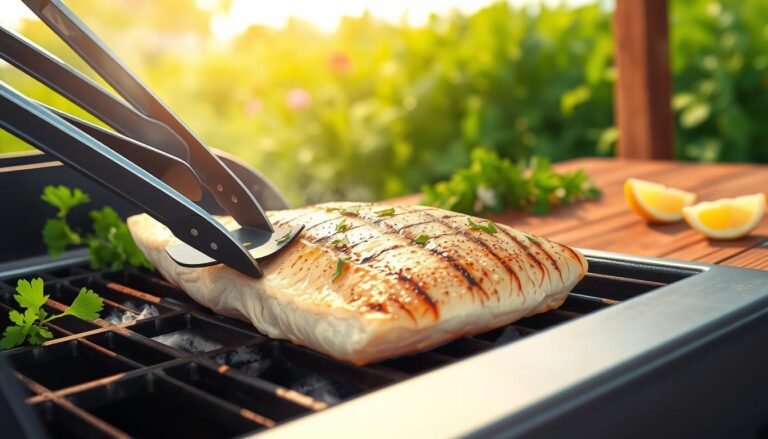Right then, let’s talk about cooking dory fillet. It’s a bit of a fancy fish, often called John Dory, and it’s known for being pretty delicate. You don’t want to go messing it up, do you? So, this guide is all about how to cook dory fillet so it turns out just right – tender and tasty, without any fuss. We’ll cover picking the best bits, a simple way to cook it, and some ideas for what to serve it with. Easy peasy. Learn how to cook dory fillet perfectly!
Key Takeaways
- When picking dory fillets, look for ones that are shiny and moist, not dull or dry. If you’re unsure, ask your fishmonger.
- The best way to cook dory is simply pan-frying. It doesn’t need much – just a bit of oil, butter, shallots, wine, and lemon.
- Don’t overcook it! Dory is delicate and only needs a minute or so on each side. It cooks quickly.
- Keep the flavours simple. Stronger tastes can overpower the fish. Fresh herbs like parsley or chives are perfect.
- Serve your perfectly cooked dory with simple sides like glazed carrots, peas, or green beans. A squeeze of lemon is always a good idea.
Selecting And Preparing Dory Fillets
When you’re aiming for a perfectly tender dory fillet, starting with the right fish and handling it with care makes all the difference. Dory, often known as John Dory or Saint-Pierre in France, is a beautiful white fish with a delicate flavour. It’s not the cheapest fish, but its quality really shines through when cooked simply.
Choosing Fresh Dory Fillets
Picking out fresh dory is pretty straightforward if you know what to look for. Your fishmonger is your best mate here; get to know them and ask when they receive their deliveries. Ideally, you want to buy your fish on delivery day. If you can’t do that, aim for the next day. The general rule is that fresh fish is best eaten within two days of being caught. When you’re inspecting the fillets, they should look shiny and moist, not dull or dry. Give them a gentle sniff – they should smell like the sea, not overly ‘fishy’ or like ammonia. If you’re buying a whole fish, check for clear eyes and bright red gills.
Gentle Preparation For Delicate Fish
Once you’ve got your dory fillets, treat them gently. Dory is quite delicate, so it doesn’t need a lot of fuss. You’ll want to pat the fillets dry with paper towel before cooking. This helps to get a better sear on the outside. If your fishmonger hasn’t already, you might need to remove the skin, though some people prefer to leave it on for pan-frying as it can help hold the fillet together. Just be mindful that dory skin can be a bit tough, so if you’re leaving it on, make sure it’s well-seasoned. For a really simple approach, just a little salt and pepper is often all that’s needed to let the natural flavour of the fish come through. Remember, this fish is quite lean, so it cooks quickly and can dry out if you’re not careful. Simple instructions for grilling fish can also be adapted for pan-frying.
Simple Pan-Frying Technique For Dory
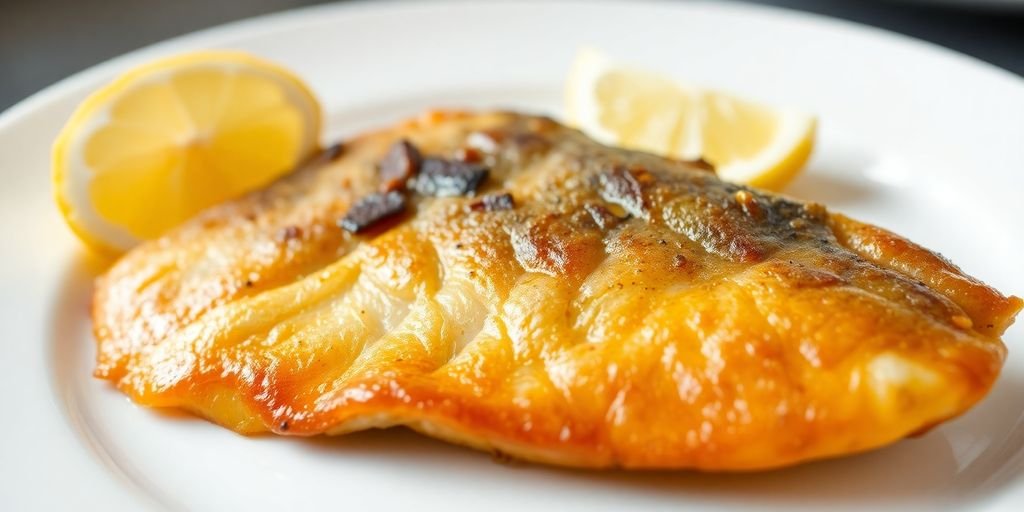
Read Also: Fish Storage Tips at Home: Keep Your Catch Fresh Longer
Pan-frying is a fantastic way to cook dory fillets, keeping them moist and flavourful. It’s a quick method that really lets the delicate taste of the fish shine through. We’re aiming for a lovely golden crust on the outside while keeping the inside tender and flaky. It’s not complicated, but a few little tricks make all the difference.
Achieving A Golden Exterior
To get that perfect golden crust, you want to make sure your fillets are patted completely dry before they hit the pan. Moisture is the enemy of crispiness! A light dusting of seasoned flour, or even just rice flour for a lighter touch, can help create a beautiful, even colour. Don’t overcrowd the pan either; give the fillets space so they can fry properly rather than steam.
Cooking Time For Perfect Tenderness
John dory is a delicate fish, so it cooks very quickly. Overcooking is the biggest mistake you can make. Generally, you’re looking at about 2-3 minutes per side, depending on the thickness of your fillet. It should flake easily with a fork when it’s done. It’s better to undercook it slightly and let it finish cooking off the heat than to have it dry out.
Flipping And Finishing The Fillets
When it’s time to flip, use a thin spatula to gently lift the fillet. If it sticks, it’s probably not ready to be flipped yet. Once flipped, cook for another couple of minutes. After both sides are golden and the fish is cooked through, you can turn off the heat. Adding a knob of butter and a squeeze of lemon juice to the pan, then basting the fish with this mixture for the last 30 seconds or so, adds a lovely richness and shine. Cover the pan briefly to let the fish rest and finish cooking in the residual heat.
Flavour Enhancements For Dory
While John Dory is a beautiful fish on its own, a few simple additions can really make it sing. The key is to keep things light and complementary, letting the fish’s natural delicate flavour shine through. We’re not looking to overpower it, just give it a little nudge in the right direction.
Aromatic Foundations
Starting with some finely chopped shallots sautéed gently in a mix of olive oil and butter creates a lovely base. This isn’t about browning them to a crisp, but just softening them until they’re translucent and sweet. It adds a subtle depth without being aggressive. You could also try a tiny bit of garlic, but be very sparing – just a whisper is enough.
Deglazing With Wine And Lemon
Once the fish is cooked, a splash of dry white wine into the hot pan works wonders. Let it bubble for a moment to cook off the alcohol, then add a good squeeze of fresh lemon juice. This creates a light, zesty sauce that cuts through the richness of the butter and oil. It’s a classic combination for a reason, and it works perfectly with the mildness of John Dory. Some people like to reduce this liquid slightly to concentrate the flavours, but be careful not to overdo it.
Finishing Touches With Fresh Herbs
Finally, a scattering of freshly chopped herbs right at the end is the perfect way to finish. Chives or flat-leaf parsley are excellent choices, offering a fresh, clean flavour. You could also experiment with a little tarragon or chervil if you’re feeling adventurous. Just remember, the goal is to add a bright note, not to mask the fish. A sprinkle of good quality sea salt and a grind of black pepper will round everything off nicely. For a truly classic pairing, consider serving it with a glass of Harewood Estate Porongurup Riesling.
Serving Suggestions For Dory
Once you’ve got your perfectly cooked dory fillets, the next step is figuring out what to serve them with. Because dory is such a delicate fish, it pairs beautifully with simpler accompaniments that let its natural flavour shine through. You don’t want to overpower it with anything too heavy.
Classic Vegetable Pairings
For a straightforward and delicious meal, think about classic vegetable sides. Glazed Vichy carrots offer a touch of sweetness, while fresh peas add a pop of colour and flavour. Sautéed green beans are always a winner, and some simple boiled or roasted potatoes provide a comforting base. These are all great options that won’t compete with the fish.
Exploring Alternative Sauces
While a simple squeeze of lemon and a sprinkle of fresh herbs is often all dory needs, you can explore other sauces too. A classic French beurre blanc can add a touch of richness, or for something a bit different, consider a caper sauce. If you’re feeling adventurous, a rhubarb compote might sound unusual, but its acidity can actually complement the fish nicely. Just remember to keep the sauce flavour balanced.
Unexpected Sweet And Savoury Complements
Don’t be afraid to get a little creative. While not a traditional pairing, a touch of sweetness can work well. For instance, a mild pineapple salsa can offer a fruity contrast. The key is to ensure any sweet element isn’t too overpowering, allowing the subtle flavours of the dory to remain the star of the dish. It’s all about finding that balance.
Understanding John Dory Fish
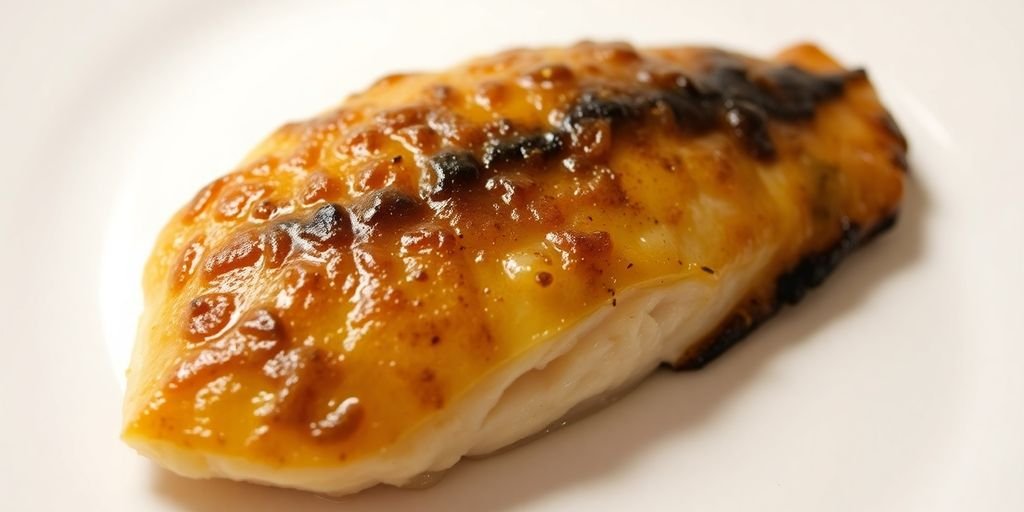
The Appeal Of John Dory
John Dory, or Saint-Pierre as it’s known in France, is a bit of a special fish. It’s not something you see every day at the local fish market, and that rarity often comes with a higher price tag. But honestly, it’s worth it. This fish has a really delicate, clean flavour, with just a hint of the sea, almost like a whisper of seaweed. It’s also quite lean, which means it cooks up beautifully without being heavy.
Why Simplicity Is Key
Because John Dory is so naturally good, you don’t need to do much to it. Overdoing it with strong flavours or heavy sauces can actually hide how nice the fish is. Think of it like a really good quality piece of fruit – you wouldn’t drown it in syrup, right? The best way to cook it is usually just a quick pan-fry with some butter, a bit of shallot, a splash of white wine, and a squeeze of lemon. It lets the fish itself be the star.
Alternative White Fish Options
If you can’t get your hands on John Dory, or if you’re just looking for other options that cook up similarly, there are a few good choices. Turbot is often mentioned as a close relative, and it has a similar firm, white flesh. Dover sole is another classic, though it’s a bit more delicate. Snapper or grouper can also work well, offering that lovely flaky white texture. Even a good quality halibut can stand in. The main thing is to look for a firm, white fish that doesn’t have an overpowering flavour, so you can treat it with the same gentle approach.
Wrapping Up Your Dory Delight
So there you have it, a super simple way to cook up some beautiful John Dory fillets. It really doesn’t take long at all, and the result is a lovely, tender piece of fish that tastes fantastic. Just a bit of butter, shallots, a splash of wine and lemon, and you’re pretty much set. Serve it with your favourite sides, maybe some greens or potatoes, and you’ve got a winner. It’s a great dish for a weeknight meal or even when you’ve got people over. Enjoy your perfectly cooked dory!
Frequently Asked Questions
Why is John Dory a bit expensive?
John Dory is a bit pricey because it’s a top-notch white fish that’s easy to get off the skin. It tastes really mild, with just a hint of the sea, and doesn’t have much fat. That’s why people like to cook it simply. It’s even used in the famous Bouillabaisse stew from Marseille!
What fish can I use instead of John Dory?
You can totally swap John Dory for other tasty white fish like Turbot, Dover sole, snapper, grouper, or halibut. They all work a treat!
How should I prepare John Dory fillets?
It’s best to get your fishmonger to do the tricky bits, like filleting the fish and taking off the skin for you. John Dory has a big head, but once it’s filleted, you get two nice, firm white fillets.
What’s the best way to get a nice crust on the fish?
For the best results, pat the fillets dry and give them a good sprinkle of salt and pepper. Then, lightly coat them in rice flour or plain flour, shaking off any extra. This helps get a lovely golden crust when you cook them.
Can I make this dish ahead of time or reheat leftovers?
It’s a real shame to reheat John Dory because it’s so lean and delicate. It tends to fall apart and dry out. If you have leftovers, it’s best to eat them cold, maybe flaked over a salad.
What are some good side dishes for Dory?
Serve your perfectly cooked Dory with some classic sides like glazed carrots, fresh peas, or sautéed green beans and potatoes. For something a bit different, a dollop of rhubarb compote is surprisingly delicious with the fish!


